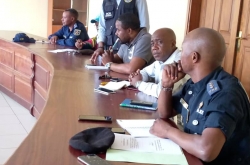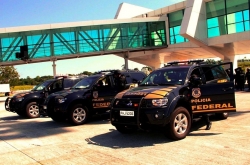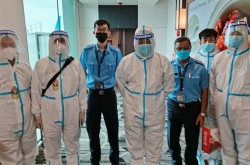The INTERPOL Facial Recognition System
The INTERPOL Facial Recognition System (IFRS) was launched at the end of 2016 and is populated with facial images received from the majority of our member countries, making it a unique global criminal database.
Developed with a powerful automated biometric software application provided by IDEMIA, INTERPOL’s biometric partner, the system can identify or verify a person by comparing and analyzing patterns, shapes and proportions of their facial features and contours. It does not, however, directly involve measuring the distance between features.
Since its creation, the IFRS System has helped to identify several thousand individuals including terrorists, criminals, fugitives, persons of interest and missing persons.
Factors of consideration in facial identification
Unlike fingerprints and DNA, which do not change during a person’s life, facial recognition must take into account different factors, such as:
- Ageing
- Plastic surgery
- Cosmetics
- Effects of drug abuse or smoking
- Pose of the subject
Working with good quality images is crucial. Poor quality images may not be searchable in the IFRS system but, if they are, then the accuracy of the search and the results may be affected.
An ICAO standard passport photo is ideal since this is a frontal image of the subject that has even lighting on the face and a neutral background. Non-ICAO standard facial images collected during police investigations can also be used if they are of acceptable quality for the facial recognition system.
How does it work?
When a facial image (probe image) is entered into the system it is automatically encoded by an algorithm and compared to the facial image templates already stored in the system. This results in a ‘candidate’ list of the most similar faces.
We always carry out a manual process – we call this Face Identification – to verify the results of the automated system. Qualified and experienced INTERPOL officers examine the images carefully, following a method recognized by experts internationally, to find distinctive characteristics that can lead to one of the following results: ‘Potential candidate’, ‘No candidate’ or ‘Inconclusive’.
Subject to INTERPOL’s Rules on the Processing of Data and any applied restrictions, this information is then passed on to the data owner and requestor countries.
Cross-checking with INTERPOL Notices
All facial images in Notices and Diffusions submitted by member countries are searched and stored in the facial recognition system, provided they meet the strict quality criteria needed for recognition.
Participating member countries can also submit ‘search only’ requests directly to the system, using the Biometric Hub, for example, to carry out a check on a person of interest at border crossings. The results are returned quickly to enable immediate follow-up action, and images are not recorded in the facial image database.
Bringing experts together
The implementation of Facial Recognition Systems is in its infancy in many countries and standards and best practices are still in the process of being created.
To address this, INTERPOL hosts regular Face Expert Working Group (IFEWG) meetings. IFEWG is an advisory group where domain experts discuss and present new technology capabilities, identification procedures, highlight training needs and collaborate to produce official best practice documents to assist member countries.
We also host the INTERPOL International Fingerprint and Face Symposium which provides an opportunity for experts from around the world to share best practice and latest developments.
Promoting best practices
While facial recognition systems have huge potential for national safety and security, they require a robust governing structure to protect human rights and personal data.
INTERPOL, along with the World Economic Forum (WEF), the United Nations Interregional Crime and Justice Research Institute (UNICRI) and Netherlands Police, co-designed a policy framework to promote the responsible and transparent use of facial recognition technology in law enforcement investigations.
A result of this global, multi-stakeholder consultation, the White paper “A policy Framework for Responsible Limits on Facial Recognition – Use Case: Law Enforcement Investigations” was published in November 2022.
Related documents

Related news
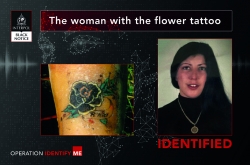
UK woman murdered in Belgium identified after international appeal
14 November 2023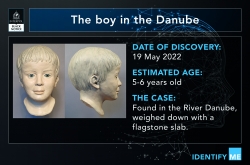
International appeal to identify dead child in Germany
29 August 2023